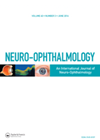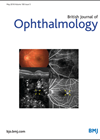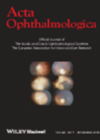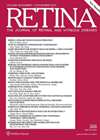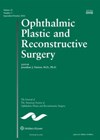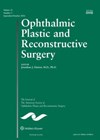
Journal Reviews archive for December 2016
Bilateral internuclear ophthalmoplegia
Bilateral internuclear ophthalmoplegia (INO) has been linked with various pathological conditions of the central nervous system such as multiple sclerosis, stroke, tumours and brainstem inflammatory processes. This unusual case report describes a case of a 45-year-old female patient presenting with...
Suspected vitreous seeding of uveal melanoma
This is a retrospective non-randomised study of 23 patients with consecutive uveal melanoma who underwent diagnostic vitrectomy between the period of January 2000 and November 2013. The reason for vitrectomy was suspected dissemination of tumour cells inside the eye. The...
Factors indicating better stereopsis for APAET
The purpose of this study was to determine preoperative factors that affect postoperative stereopsis in patients with acquired partially accommodative esotropia (APAET). This retrospective study was undertaken over a five-year period. Eighty-four subjects had surgery for APAET and 57 met...
MISS vs. fornix approach
The objectives of this study were to compare minimally invasive strabismus surgery (MISS) with the fornix approach in paediatric horizontal strabismus surgery (<12 years) and to evaluate early postoperative inflammation, visual acuity and operating time after a four-year training period...
Perception of depth in 3-D media
The aim of this study was to evaluate the relationship between clinical measures of stereoacuity and the perception of depth in 3-D entertainment media. Fifty-seven subjects aged 16-62 years with stereopsis and no strabismus were assessed. Monocular blur was used...
PALs use for convergence excess esotropia
This retrospective study includes a disparate group of 39 esotropic patients with an accommodative element from two different clinics with differing prescribing practices. Seven children were excluded due to previous treatment or insufficient follow-up. In all patients single vision glasses...
Supranuclear palsy
This paper reports the results of surgery for supranuclear monocular elevation deficiency. Contralateral superior rectus maximal recession was undertaken without interfering with the superior oblique tendon position, transection of the superior oblique to the superior rectus frenulum and directly suturing...
Changes in parafoveal retinal thickness after bariatric surgery in type 2 diabetics
Bariatric surgery induces an instant normalisation of blood glucose in as many as 80% of patients with type 2 diabetes. It has been previously reported that diabetic retinopathy (DR) is stable within one year after bariatric surgery. In this study,...
Macular hole postop positioning
The purpose of this study was to determine whether the full thickness macular hole (FTMH) closure rate with nonsupine positioning (NSP) is noninferior to the high closure rate achievable with face down positioning (FDP). All patients were pseudophakic pre macular...
Imiquimod for lentigo maligna
This is a retrospective review of 12 patients with periocular lentigo maligna treated with topical 5% imiquimod cream. In six patients it was the only treatment, and in the other six it was used following partial excision, cryotherapy or both....
Serology testing in periocular inflammatory disease
This is a review article of serological tests in thyroid eye disease, IgG4-related disease and myasthenia gravis. The authors provide an overview of the current serology with a brief description of how they relate to the pathogenesis of each condition....

